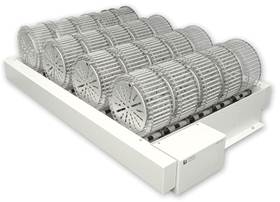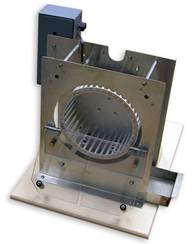Obese has been an important disease to be cured as concept of a lifestyle-related disease is widely accepted. A therapeutically principle of obese is a balance between income and outgo of energies (calories). It is a simple subtraction in which if energy consumption is larger or smaller than energy intake, a body becomes lean or fat, respectively. However, it is not simple because a food intake is not equal to the energy intake and a locomotor activity is not equal the energy consumption. The former difference is used in a diet to lose weights such as taking the low-energy and high-volume diet that decreases fats having high energies per weight and increases fibers hard to digest. In the latter difference, much attention is paid to the energy consumption by a heat as well as exercise. Brown adipose tissues (BAT) consume energies by thermogenesis and a very interesting study has been told that a decrease in BAT is one of reasons causing a middle-age spread (1). Brown adipose tissues (cells) are highly expressed in mice and studied. In human, BAT is highly appeared in infants but it has been believed that BAT is rapidly decreased and few expressed in adults. However, the same study shows with PET that BAT is related to thermogenesis in adult humans. As food components and compounds that promote thermogenesis by stimulating BAT are studied, a strategy to lose weights through energy consumption by the thermogenesis in BAT may become true. However, almost energy consumption is conducted by locomotion and increase in the consumption by locomotion as well as the diet is a basic point in a therapy of obese.
We must force exercise in rodents to study it. Although observation of spontaneous locomotion in rodents is one technique of studies, we cannot equalize exercise in the animals and control intense of exercise in the spontaneous locomotion. Therefore, several methods forcing exercise in rodents are developed and used to study exercise in obese consuming energy, in sports, in fatigue and so on.
9-1 Treadmill
A treadmill in rodents is a device that force them run on a rotating belt with a constant speed and its principle is same as a treadmill in which humans use to exercise in an indoor facility. We run by our will but rodents are motivated by electric shocks as punishing stimuli because it is difficult to make them run by their wills. Steel rods (electrodes) are equipped side by side to form a floor behind the belt and the rodents receive the shocks via the electrodes when they do not run and fall from the moving belt. The rodents run in reverse to a rotating direction of the belt, namely, go far away from the electrodes to avoid the shocks. A running speed in rodents is controlled by a rotating speed of the belt. A running distance is also calculated from a running time and the speed. We can tilt the belt (a running arm) with an angle and force the rodents run upward to increase intense of exercise.
Rats and mice may not move on the electrodes to receive the shocks rather than run if the intense of exercise increases. Their sensitivities to the shocks may be lowered due to fatigues. Therefore, we should adjust intense of the electric shocks according to observation in rats and mice. They may be impossible to move by fatigues in spite of the shock intense and they may not feel the shocks due to a short of an electric shock circuit by urine or feces. We must the rodents force exercise in the treadmill watching their behaviors as we stop the belt and pull out the animal or change the shock intense according to circumstances. A treadmill generally has a timer to stop the belt automatically after preset time but we should observe the rodents not conduct unmanned operation during their exercise even if it is a long time.
Although sizes of a running arm for rats and mice are different, some force mice run in the treadmill for rats. In this case, mice may go to a front edge of the belt at a dash, are brought into near the electrodes by the moving belt, and again run since the running arm is long for mice. If the running arm is shortened or the speed is increased, mice become difficult to run in such way but may not acquire to run in the treadmill at the beginning. Generally, training in rodents in the treadmill is started from the low speed and the low shock intense and force them exercise at a constant intense for a pre-determined time after the running was acquired. The shock intense should be limited at a minimum to motivate their running. A multiple-lane treadmill in which multiple animals simultaneously run is available but we usually cannot adjust the speed and the shock intense separately in each lane. If multiple rodents simultaneously receive the shocks, the intense may lower and we should take care of it.
Performance of exercise in rodents is sometime evaluated in treadmill by measuring a time until they cannot run due to their fatigues. Some treadmills have a running arm of a gas-tight chamber for a metabolic analysis (a respiratory gas analysis). Although expired gas is collected via a face mask to a bag (a Douglas bag) shouldered on the back running in humans, whole gas in the chamber including expired gas is aspirated to an analytical device in rats and mice. We can estimate whether fat or carbohydrate (glycogen) is consumed by a rate (respiratory quotient: RQ) of oxygen (VO2) and carbon dioxide (VCO2) in expired gas. Because very few expired gas in rats or mice is diluted by a large amount of gas in the chamber, the analytical device with higher sensitivity is needed in the rodents which is very expensive than that in humans.
We sometime decrease a rotating speed of a belt to make rodents walk in a treadmill and use to a gait analysis. To this purpose, transparent sides of the treadmill are needed for observation of the animal by video recording.
Air blast (air puff) is sometime used as a punishing stimulus to motivate running instead of an electric shock, which is simultaneously used if the air blast is insufficient (2). We use reward (positive reinforcer) such as foods in studies by an operant behavior as well as punishment (negative reinforcer) but cannot have realized it in a treadmill running. A phrase of "dangle the carrot to get the horse trotting" is used but it is difficult to realize in rodents. Forced exercise motivated by punishment is considered to be a strong stress and physiologically different from sports as fun in humans. If we can make rodents run by attractant such as preferred odors, it may become a novel exercise model in rodents.
9-2 Water-Flowing Pool
A forced swimming test is well known as a test to evaluate antidepressants, in which rodents can keep immobile and an immobility time is measured (see "3-1 Forced Swimming" in "3. Antidepressants"). In the other test, rats and mice swim in a swimming pool flowing from one side of a tank surface to another side of a bottom with water aspirated from the side of the bottom (3). Because the rodents sink to the bottom if they stop swimming against flowing water, we can force them swim. We have a merit to force exercise immediately in rodents in this pool because they can swim without any training. However, we must observe taking care since the rodents will drown if we do not rescue when they could not swim and sank.
Mice also must swim with weights on their tails in a water tank not to sink (4), but we must prepare the weights adjusting body weights of mice. It is a simple method that multiple mice compete to swim in one small water tank (5). However, it is not easy to use as forced exercise because each amount of exercise in each mouse may be highly varied.
9-3 Forced Running Wheel
We can count a rotating number of a running wheel as spontaneous locomotion in rodents and also can force their exercise in a rotating wheel with a constant speed. Following two types of wheels as a forced running wheel are available: a motorized running wheel in which both free running and forced running can be conducted and a specific device for forced exercise in which multiple wheels can be simultaneously rotated. Further, each device has different sizes for mice and rats.

A photo cited from Lafayette Instrument

A photo cited from Lafayette Instrument
Rodents generally run according to rotation but can grip rods of wheel surroundings and rotate not to run. Therefore, amounts of locomotion are not constant unlike exercise in a treadmill. Since rotating speed of the wheel is slower than that of a moving belt in the treadmill, it is often used to give stress rather than exercise.
9-4 Closing
Slimming (a fight against obese) becomes a national concern and currently forced exercise by a treadmill etc. is necessary for studies in rodents as well as measuring food intake and locomotion.
Very recently, Fryer et al reported that a mild long-term exercise regimen in a treadmill considerably improved survival in a mouse model of spinocerebellar ataxia type 1 (SCA1), a fatal neurodegenerative disease (6). Since exercise is relevant in therapy and improvement in quality of life such as anti-aging and rehabilitation as well as a fight against obese, forced exercise such as a treadmill running is very important as means for animal studies. We must recognize that we force exercise in rodents in a treadmill or a water-flowing pool different from measuring spontaneous locomotion and must study observing much carefully.